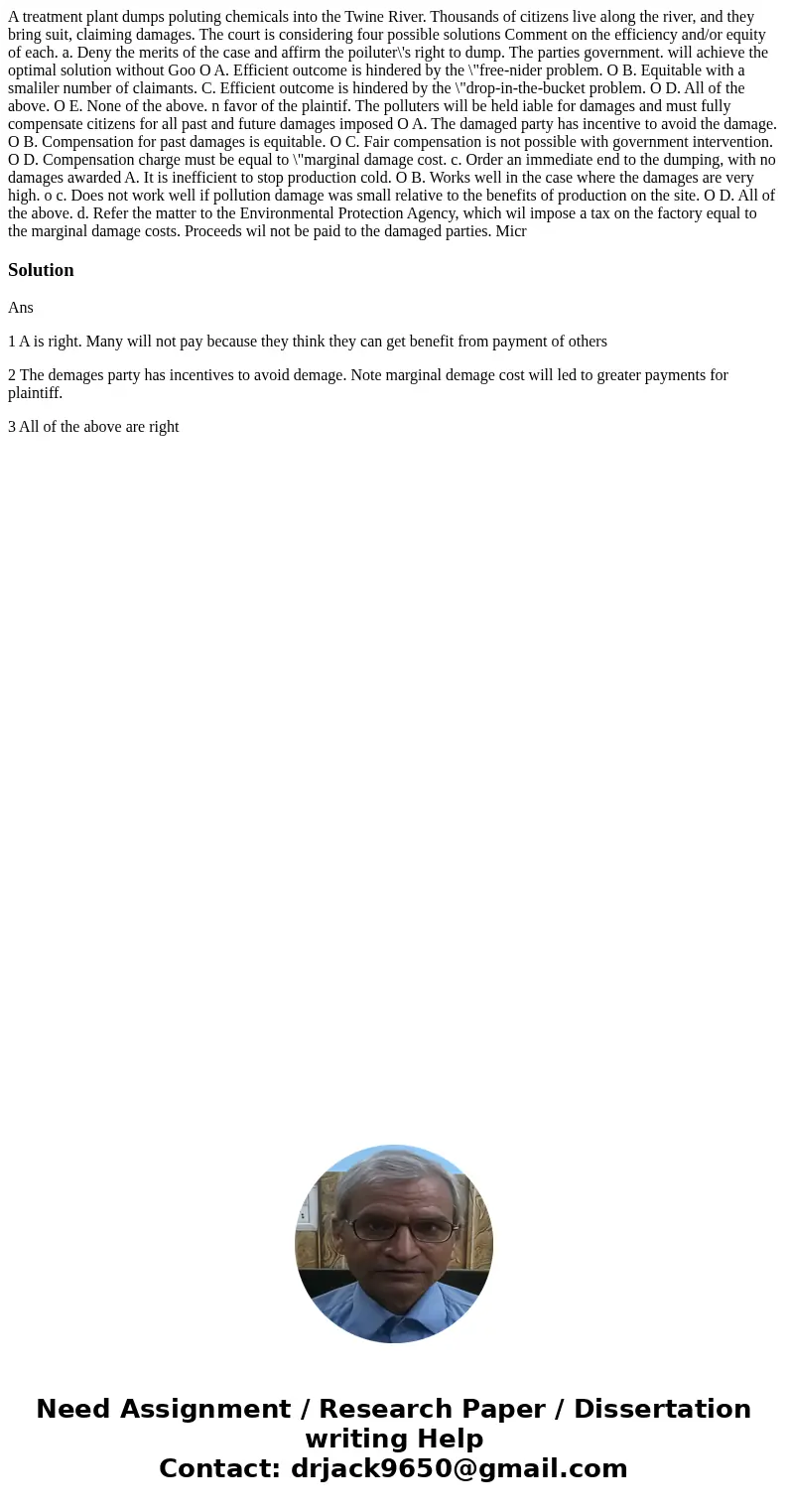A treatment plant dumps poluting chemicals into the Twine Ri
A treatment plant dumps poluting chemicals into the Twine River. Thousands of citizens live along the river, and they bring suit, claiming damages. The court is considering four possible solutions Comment on the efficiency and/or equity of each. a. Deny the merits of the case and affirm the poiluter\'s right to dump. The parties government. will achieve the optimal solution without Goo O A. Efficient outcome is hindered by the \"free-nider problem. O B. Equitable with a smaliler number of claimants. C. Efficient outcome is hindered by the \"drop-in-the-bucket problem. O D. All of the above. O E. None of the above. n favor of the plaintif. The polluters will be held iable for damages and must fully compensate citizens for all past and future damages imposed O A. The damaged party has incentive to avoid the damage. O B. Compensation for past damages is equitable. O C. Fair compensation is not possible with government intervention. O D. Compensation charge must be equal to \"marginal damage cost. c. Order an immediate end to the dumping, with no damages awarded A. It is inefficient to stop production cold. O B. Works well in the case where the damages are very high. o c. Does not work well if pollution damage was small relative to the benefits of production on the site. O D. All of the above. d. Refer the matter to the Environmental Protection Agency, which wil impose a tax on the factory equal to the marginal damage costs. Proceeds wil not be paid to the damaged parties. Micr 
Solution
Ans
1 A is right. Many will not pay because they think they can get benefit from payment of others
2 The demages party has incentives to avoid demage. Note marginal demage cost will led to greater payments for plaintiff.
3 All of the above are right

 Homework Sourse
Homework Sourse